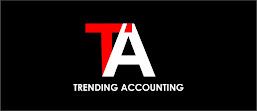Basic Financial Accounting Formulas You Should Know
Accounting is the systematic process of analysing, interpreting, communicating financial information to enable users make decisions.
As an accountant or Accounting students, there are certain accounting formulas and ratios you should know. The following are some of them:
ALSO READ: Duties Of An Accountant
Accounting Rate of Return
Net Income / Initial Investment
Accounts Payable Turnover
Cost of Goods Sold / Average Accounts Payable
Accounts receivable turnover
credit sales / average gross accounts receivables
Accounts Receivable Turnover Ratio
Net Credit Sales/Avg Net Accounts Receivable
Accounts receivable collection period
Investment in Accounts Receivable / Daily Sales
ALSO READ: Types Of Accounting
Accumulated Depreciation
Cost- Salvage Value/Years
Activity Ratios (list 10)
1.Accounts receivable turnover
2.Accounts payable turnover
3.Inventory turnover
4.Days sales in receivables
5.Days sales in inventory
6.Days purchases in payables
7.Operating cycle
8.Cash cycle
9.Total asset turnover
10.Fixed asset turnover
Asset Turnover
Total Revenue / Average Total Assets
Average Collection Period
365 / Receivables Turnover
Average costs per sale
Total Cost/Sales
Average Days to Sell Inventory
365 / Inventory Turnover
Average Issuance Price
A balance of common shares account/acquisition
Balance Sheet
Assets = Liabilities + Stockholders’ Equity
Basic Earnings Per Share (EPS)
Net Income – Preferred Dividends/Weighted-Average Common Shares Outstanding
ALSO READ: 3 Golden Rules of Accounting
Book Value Per Common Share
Stockholder’s Equity Applicable to Common Shares/Number of Common Shares Outstanding
Book Value Per Preferred Share
Stockholder’s Equity Applicable to Preferred Shares/Number of Preferred Shares Outstanding
Book value per share
(total stockholders’ equity – preferred equity) /
number of common shares outstanding
Break – even point
Break Even = Fixed Cost/Contribution Margin
Breakeven point in dollars
fixed costs / (unit contribution margin/selling price)
Breakeven Sales
Fixed Costs / Contribution Margin Ratio
Breakeven Units
Fixed Costs / CMPU
Capital Acquisitions Ratio
Cash Flow from Operating Activities / Cash Paid for Property, Plant, and Equipment
Cash coverage ratio
EBIT + depreciation / interest
Cash cycle
Operating cycle – days purchases in payables
Cash ratio
(cash + marketable securities) / current liabilities
Cash to expense ratio
Cash-To-Expense Ratio = (Investment in Cash + Investment in Marketable Securities) / (Annual Operating Expense/365 days)
ALSO READ: Difference Between Accounting And Finance
COGM Formula
BWIP
DM used:
Beg RM
(+) Purchases
(=) Available
(-) End RM
(=) DM used in production
(+) DL
(+) MOH
(=) Total Manufacturing Costs
(+) BWIP
(-) EWIP
(=) COGM
COGS Formula
Beg FG Inventory
(+) COGM
(-) End FG Inventory
(=) COGS
Computing Interest
Principal of the Note x Annual Interest Rate x Time Expressed In Fraction of Year = Interest
Contribution Margin
Sales Revenue – Variable Costs
Contribution Margin Ratio
Contribution Margin / Sales Revenue
Conversion Costs
DL + MOH
Cost/volume/profit analysis (list 4)
1.Breakeven point in units
2.Breakeven point in dollars
3.Margin of safety
4.Margin of safety ratio
ALSO READ: Risks Of An Accounting Career
Current Ratio
Current Assets / Current Liabilities
Days In Inventory
365/Inventory Turnover
Days purchases in payables
average payables / (purchase / 365)
Days’ sales in inventory
365 days / inventory turnover or
Investment in Inventory / Cost of Daily Sales
Days sales in receivables
365 days/receivables turnovers or
average accounts receivable / (credit sales / 365)
Days’ Sales Uncollected
Accounts Receivable/Net Sales x 365
Debt coverage ratio
Earnings BEfore Interest and Taxes for a Given Period /(Interest Expense for a Given Period + Principal Payments on Debt for a Given Period)
Debt to Asset Ratio
Total Liabilities/Total Assets
Debt-to-Equity
Total Liabilities/ Total Equity
Degree of financial leverage
% change in net income / % change in EBIT,
or
= EBIT / EBT
Degree of operating leverage
= % change in EBIT / % change in sales
or
= contribution margin / EBIT
Depletion Cost
Unit Depletion Rate X Number of Units Extracted
Depletion Expense
Depletion Per Unit x Units Extracted and Sold In Period
Depletion Per Unit
Cost – Salvage Value/ Total Units of Capacity
Depreciation
(Initial Investment + Salvage Value) / Useful life
Depreciation Cost
Cost – Salvage Value
Diluted EPS
(net income – preferred dividends) / diluted weighted average common shares outstanding
Direct Labor Efficiency Variance
SR * (SH-AH)
Direct Labor Rate Variance
AH x (SR-AR)
ALSO READ: Importance Of Mathematics In Accounting
Direct Materials Price Variance
AQ x (SP-AP)
Direct Materials Quantity Variance
SP x (SQ – AQ)
Dividend payout ratio
cash dividends / net income
Dividend yield
Annual dividends per share / market price per share
Double Declining Depreciation Expense Method
( 2/useful life) X Book Value Start
Earnings Per Share
Net Income – Preferred Dividends/ Average number of common shares outstanding
Earnings yield
EPS / current market price per common share
EBITDA margin
EBITDA / sales
EBITDA ratio
enterprise value / EBITDA
Price elasticity of demand
E = [change in quantity / (average of quantities)] / [change in price / (average of prices)]
Enterprise value
total market value of the stock + book value of all liabilities – cash
Equity multiplier
total assets / total equity
ALSO READ: 10 Qualities Of A Good Accountant
Financial leverage ratio
= assets / equity
Fixed asset turnover
= sales / average net plant, property and equipment
Fixed charge coverage
= earnings before fixed charges and taxes / fixed charges fixed charges include interest, required principal repayment, and leases
fixed charges include
include interest, required principal repayment, and leases
Interest coverage (times interest earned)
= EBIT / interest expense k(3) Cash flow to fixed charges = (cash from operations + fixed charges + tax payments) /
fixed charges. Note: cash from operations is after-tax.
Fixed-asset turnover
Fixed-Asset Turnover = Annual Sales / Investment in Property, Plant, and Equipment
Good Will
Purchase Cost – Fair Value of Identifiable Assets
Gross profit margin percentage
gross profit / sales
Gross Profit Percentage
(Net Sales Revenue – COGS) / Net Sales Revenue
Income Statement
Revenues – Expenses
Inventory Turnover
COGS / Average Inventory
Invest coverage ratio
Invest Coverage Ratio = Earnings BEfore Interest and Taxes for a Given Period / Interest Expense for a Given Period
Investment Turnover
Sales Revenue / Average Invested Assets
Leverage
Avg Totals Assets/ Avg shareholders equity
Leverage ratios (list 8)
1.Degree of financial leverage
2.Financial leverage ratio
3.Total debt to total capital ratio
4.Debt to equity ratio
5.Long-term debt to equity
6.Debt to total assets ratio
7.Fixed charge coverage
8. Interest coverage (times interest earned)
ALSO READ: 5 Signs You Have A Bad Accountant
Liquidity ratios (list 5)
Net working capital
Current ratio
Cash ratio
Cash flow ratio
Net working capital ratio
Long-term debt to equity ratio
= (total debt – current liabilities) / equity
Margin of safety
= planned sales – breakeven sales
Margin of safety ratio
= margin of safety / planned sales
Market Ratios (list 10)
1.Market-to-book ratio
2.Price earnings ratio
3.Price to EBITDA ratio
4.Book value per share
5.Basic EPS
6.Diluted EPS
7.Earnings yield
8.Dividend yield
9.Dividend payout ratio
10.Shareholder return
Market-to-book ratio
= current stock price / book value per share
Measuring Value of A company
= Number Of Shares Issued X Share Price at Date
Minimum Acceptable Profit
Hurdle Rate * Average Invested Assets
Net Book Value
= Acquisition Cost – Accumulated Depreciation
Net Cash Flow
Net Income + Depreciation
Net Present Value
(Annual cash flows * PV of $1) – Initial Investment
Net Profit Margin
Net Income / Net Sales (Operating Revenues)
Net profit margin x total asset turnover x equity multiplier (DuPont model)
return on common equity
or
=(net income / sales) x (sales / average total assets) x
(average total assets) / average equity
Net working capital
current assets – current liabilities
ALSO READ: Meaning Of Sales In Accounting
Net working capital ratio
net working capital / total assets
Operating profit margin percentage
operating income / sales
P / E Ratio
Market Price Per Share /Earnings per share
Partial Income Statement
Sales
less: COGS
(=) Gross Margin
less: Operating Expenses
(=) Net Operating Income
Payback Period
Initial Investment / Annual Cash Flow
Payout Ratio/ Cash Dividends Declares/ Free Cash Flow
= Net Cash From Operating Activities –
Capital Expenditures – Cash Dividends
PE ratio
market price per share of common stock/earnings per share
Performance measures (list 2)
ROI
RI
Price Earnings Ratio
market price per share / EPS
Price to EBITDA ratio
market price per share / EBITDA per share
Price-sales ratio
price per share / sales per share
Prime Costs
DM + DL
Profit Margin
net income / sales
Profitability Analysis Ratios (list 7)
1.ROA
2.ROE
3.Net profit margin x total asset turnover x equity multiplier (DuPont model)
4.Gross profit margin percentage
5.Operating profit margin percentage
6.Net profit margin percentage
7.Sustainable growth rate
ALSO READ: Important Accounting Trends in 2019
Profitability Index
PV of Future Cash Flows / Initial Investment
Profitability Ratios -(List 6)
(1) Gross profit margin percentage
(2) Operating profit margin percentage
(3) Net profit margin percentage
(4) EBITDA margin
(5)ROA
(6) ROE
Quality of Income Ratio
Cash Flow from Operating Activities / Net Income
Quick Ratio (Acid-Test Ratio)
(cash + marketable securities + accounts receivable) /
current liabilities
Rate of Return on Assets
Net Income / Average Total Assets
Receivables Turnover
sales / accounts receivable
Residual Income
Income of business unit – (Assets of business unit x required rate of return)
Note: “Income” means operating income unless otherwise noted
Retention ratio
additions to retained earnings / net income = 1 – payout ratio
Return on Assets (ROA)
= Net profit margin x total asset turnover
or
= (net income / sales) x (sales / average total assets)
or
= net income / average total assets
Return on equity (ROE)
= Profit Margin X Asset turnover X Leverage
= Current Ratio
=ROA x financial leverage
or
= (net income / average total assets) x (average total assets / average equity )
or
= net income / average equity
ALSO READ: Difference Between Cost And Price
ROI (Division)
Net Operating Income / Average Invested Assets
ROI (Multiplication)
Profit Margin * Investment Turnover
ROI
Income of business unit / Assets of business unit
Shareholder return
(ending stock price – beginning stock price + annual dividends per share) / beginning stock price
Special Order Formula
Special Order Price
(-) Variable Manufacturing Costs
(-) Variable Selling and Administrative
(-) Additional Fixed Costs
(=) Net Extra Income per unit
Statement of Cash Flows
+/- Cash Flows from Operating Activities
+/- Cash Flows from Investing Activities
+/- Cash Flows from Financing Activities
= Net Change in Cash
+/- Cash Flows from Operating Activities
+/- Cash Flows from Investing Activities
+/- Cash Flows from Financing Activities
= Net Change in Cash
Statement of Retained Earnings
Retained Earnings (beginning) + Net Income – Dividends
Straight Line Depreciation Expense Method
Depreciation Cost / Useful Life
Straight-Line Depreciation
Cost – Salvage Value/ Useful Life in Periods
Sustainable growth rate
= (1- dividend payout ratio) x ROE
Target Operating Income Sales (TIS)
(FC + Target Operating Income) / CMR
Target Operating Income Units (TIU)
(FC + Target Operating Income) / CMPU
The required rate of return for equity
Re = Rf + Risk Premium
The required rate of reurn for debt
Rd = Rf + Risk Premium
Times Interest Earned Ratio
EBIT / interest or
(Net Income + Interest Expense + Income Tax Expense) / (Interest Expense)
Total asset turnover
sales / average total assets
Total debt ratio
total assets – total equity / total assets
Total debt to total capital ratio
(current liabilities + long term liabilities) / (total debt + total equity)
Total Manufacturing Costs
DM + DL + MOH
Transfer Price
Variable Costs + Opportunity Cost
Unit Depletion Rate
= (Total Cost – Salvage Value )/units in resource
ALSO READ: How Accounting Was Done Before Spreadsheet
Units Of Activity Depreciation Expense Method
= (Depreciation Cost / Total Units Of activity)
X
Units of Activity used in year
Working Capital
= Current Assets – Current Liabilities.
You can add yours via the comments section.











